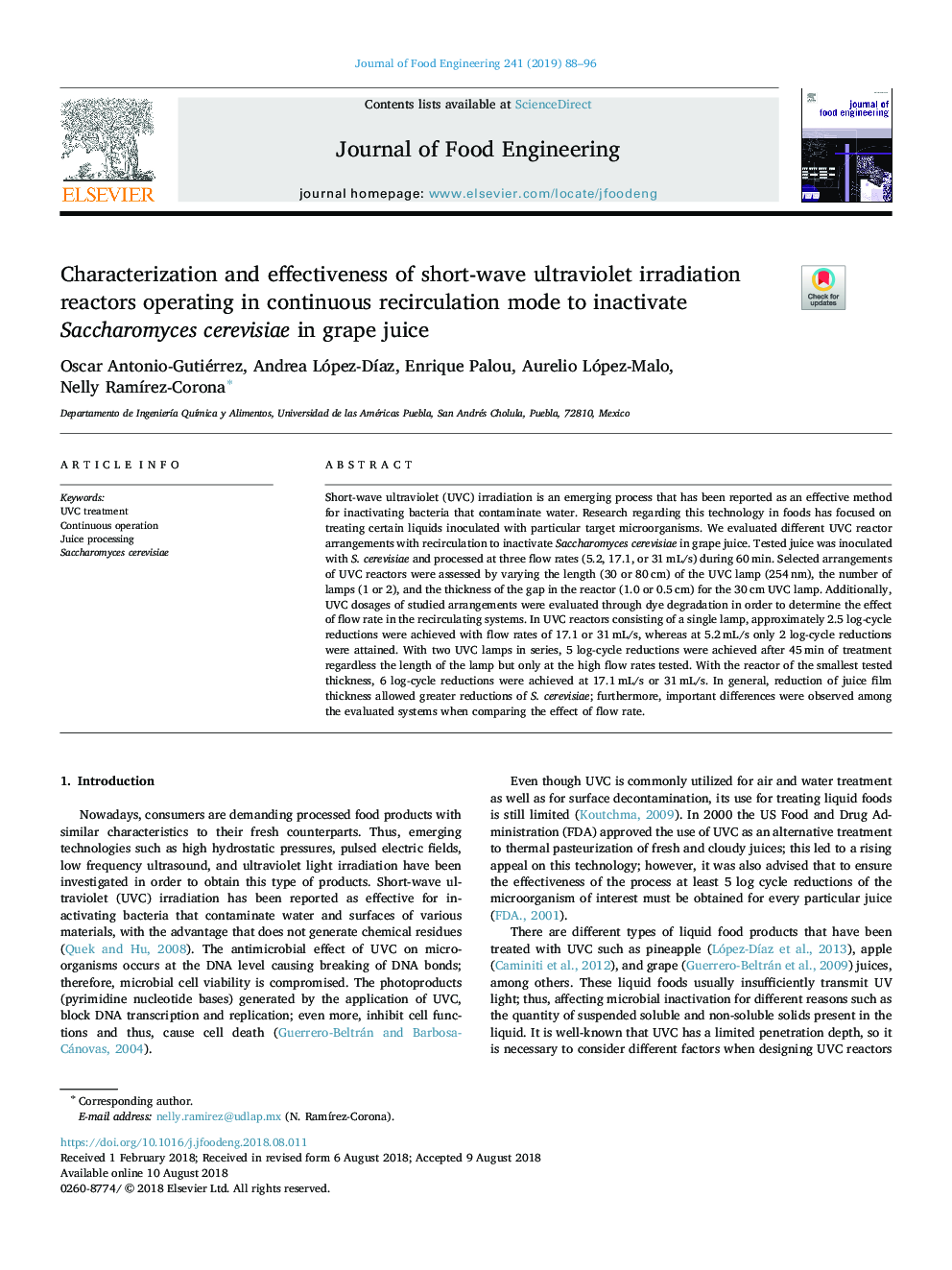| Article ID | Journal | Published Year | Pages | File Type |
|---|---|---|---|---|
| 6664350 | Journal of Food Engineering | 2019 | 9 Pages |
Abstract
Short-wave ultraviolet (UVC) irradiation is an emerging process that has been reported as an effective method for inactivating bacteria that contaminate water. Research regarding this technology in foods has focused on treating certain liquids inoculated with particular target microorganisms. We evaluated different UVC reactor arrangements with recirculation to inactivate Saccharomyces cerevisiae in grape juice. Tested juice was inoculated with S. cerevisiae and processed at three flow rates (5.2, 17.1, or 31â¯mL/s) during 60â¯min. Selected arrangements of UVC reactors were assessed by varying the length (30 or 80â¯cm) of the UVC lamp (254â¯nm), the number of lamps (1 or 2), and the thickness of the gap in the reactor (1.0 or 0.5â¯cm) for the 30â¯cm UVC lamp. Additionally, UVC dosages of studied arrangements were evaluated through dye degradation in order to determine the effect of flow rate in the recirculating systems. In UVC reactors consisting of a single lamp, approximately 2.5 log-cycle reductions were achieved with flow rates of 17.1 or 31â¯mL/s, whereas at 5.2â¯mL/s only 2 log-cycle reductions were attained. With two UVC lamps in series, 5 log-cycle reductions were achieved after 45â¯min of treatment regardless the length of the lamp but only at the high flow rates tested. With the reactor of the smallest tested thickness, 6 log-cycle reductions were achieved at 17.1â¯mL/s or 31â¯mL/s. In general, reduction of juice film thickness allowed greater reductions of S. cerevisiae; furthermore, important differences were observed among the evaluated systems when comparing the effect of flow rate.
Related Topics
Physical Sciences and Engineering
Chemical Engineering
Chemical Engineering (General)
Authors
Oscar Antonio-Gutiérrez, Andrea López-DÃaz, Enrique Palou, Aurelio López-Malo, Nelly RamÃrez-Corona,
